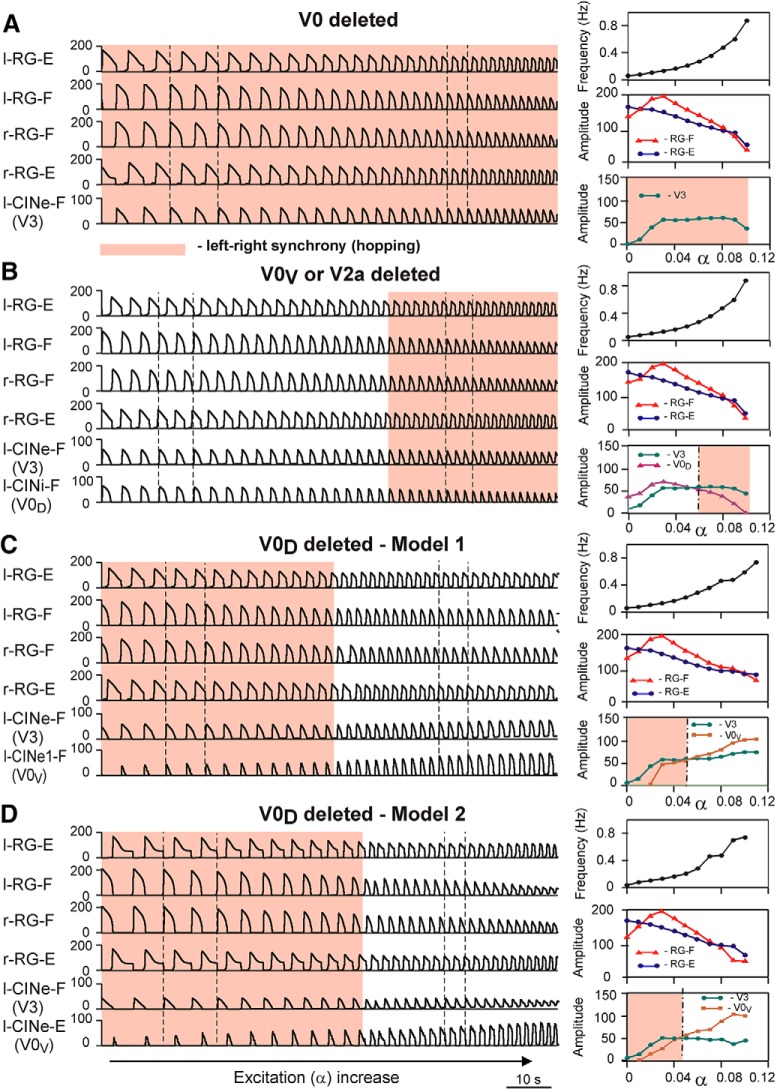Figure 8.
Frequency-dependent changes in left–right coordination of activity following selective removal of particular CIN pathways. A, Performance of both models after removal of both V0 (V0V and V0D) CIN populations. B, Performance of both models after selective removal of V0V CIN or V2a populations. C, D, Performance of Model 1 and Model 2, respectively, after selective removal of V0D CIN populations. The left column in each panel shows the activity of all centers and the remaining (left) CIN populations. In all panels, α was increased for 200 s. The vertical dashed lines indicate the beginning of the left flexor phases at lower and higher values of α (and oscillation frequency). The right column in each panel shows changes of the key model characteristics in response to a slow ramp increase of neuronal excitation: the top diagram shows changes in the frequency of oscillation; the middle diagram represents changes in the amplitude of activity of l-RG-F (red) and l-RG-E (blue) centers; and the bottom diagram shows changes in the amplitude of activity of V3 (green), V0D (purple), and V0V (brown) CIN populations. The dash-dotted vertical lines in right panels indicate transitions between left–right alternation and left–right synchronization. The regions of left–right synchronized activity are highlighted by pink rectangles. Modified from Shevtsova et al. (2015), their Figures 7 and 8, with permission.

